Spiral plate heat exchanger. Download Scientific Diagram
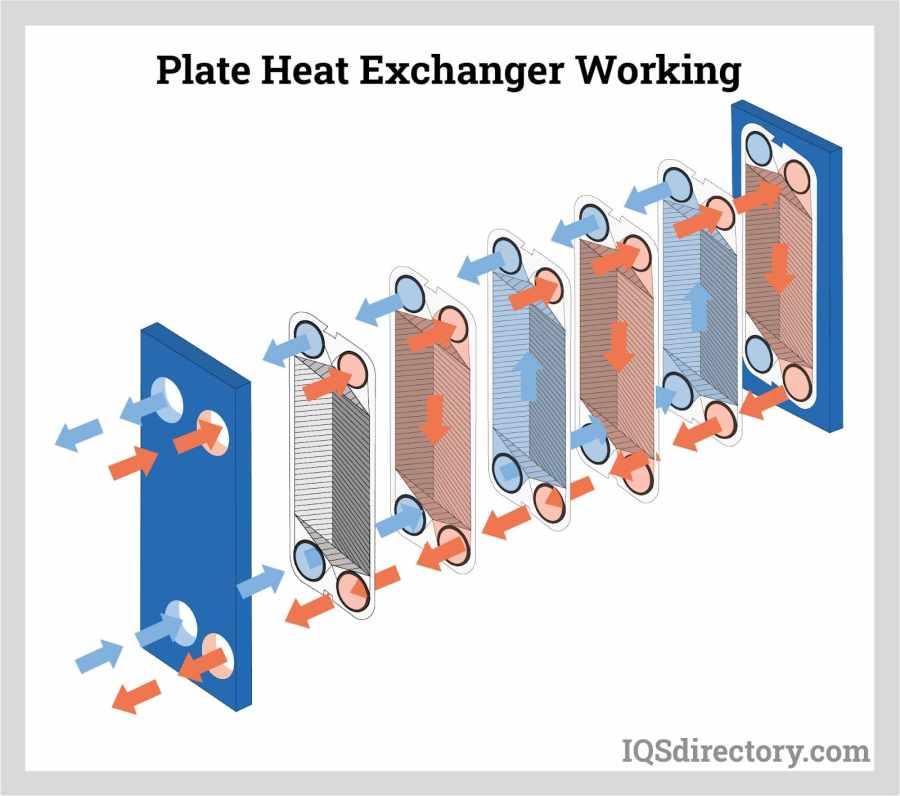
Plate Heat Exchangers CHEMCASTIC
1. General 2. Types 3. Definitions a) Shell & Tube Exchanger b) Plate Exchangers c) Spiral Exchanger d) Double Pipe Exchanger e) Air Cooler Exchanger 4. Consideration From Equipment Layout Of View 5. Considerations From Piping Point Of View 6. Key Factors To Be Considered During Design 1.0 GENERAL
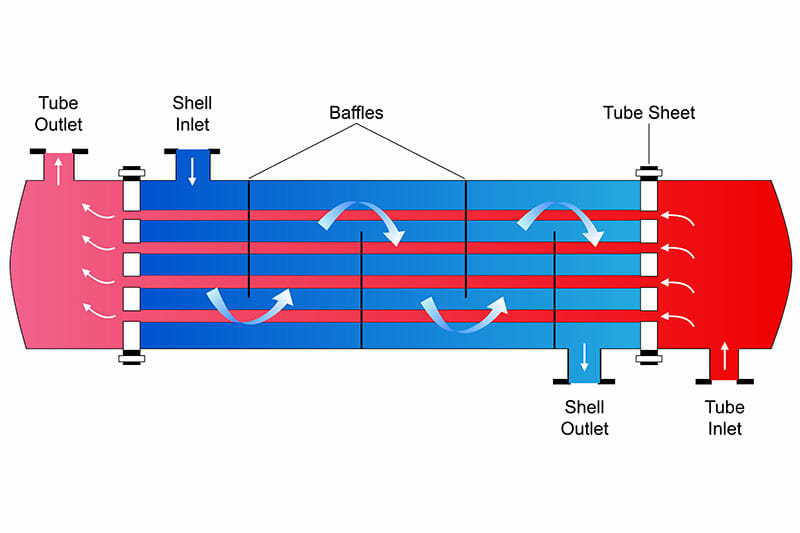
How Do Shell And Tube Heat Exchangers Work? Torq N' Seal®
As implied by Figure 1 (b), the temperature difference ΔT = Th − Tc is approximately linear such that. d(ΔT) dq = ΔT1 − ΔT2 qT. Combining Eqs. (1) and (2) and integrating over the area A of the exchanger we see that. qT = UAΔT1 − ΔT2 lnΔT1 ΔT2 = UAΔTlmtd, where ΔTlmtd is the log-mean temperature difference.
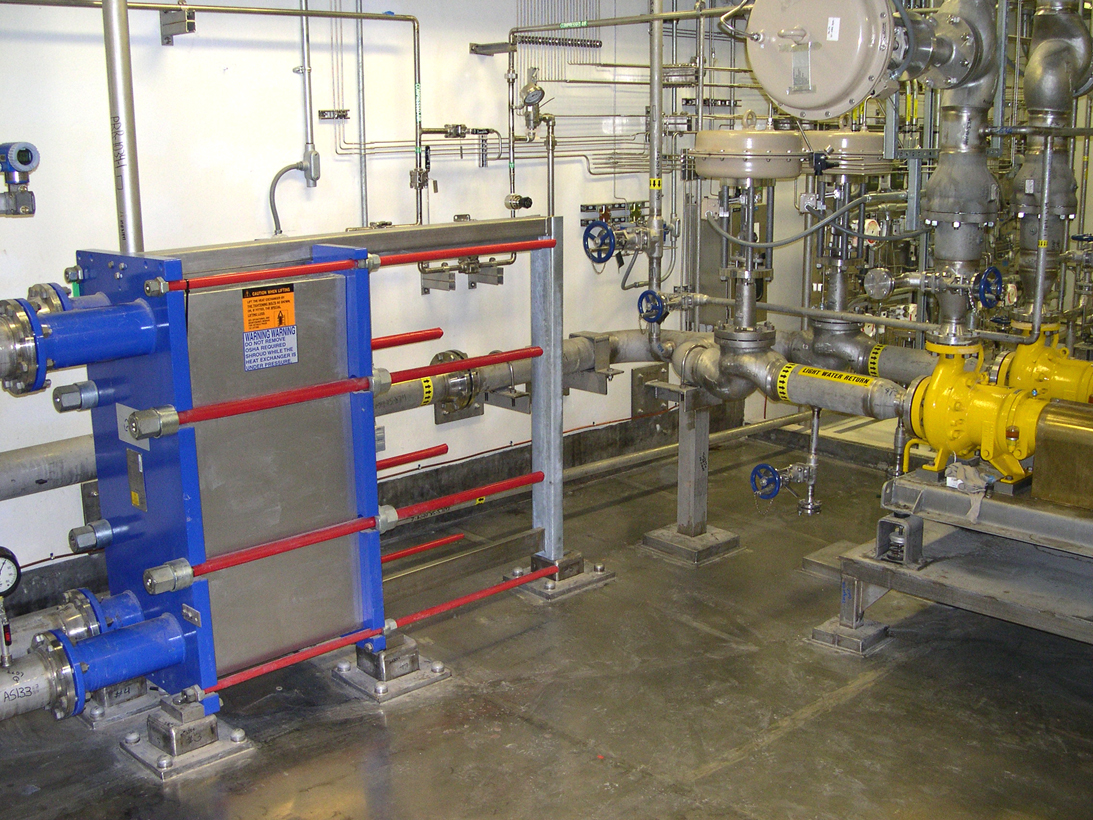
PLATE TYPE HEAT EXCHANGER BY
Want to continue learning about engineering with videos like this one? Then visit:https://courses.savree.com/ Want to teach/instruct with the 3D models shown.
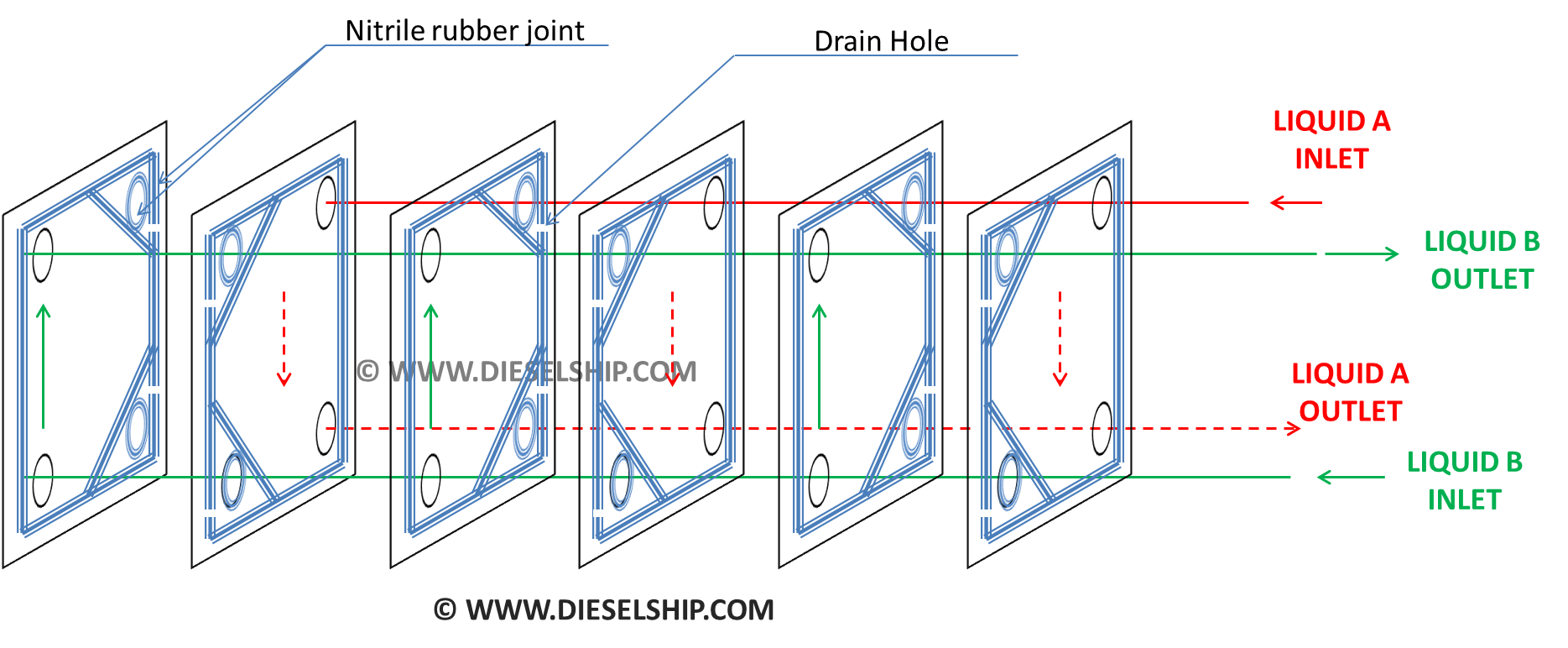
Marine Heat Exchanger Diagram Wiring Diagram
Heat Exchangers Heat exchangers take the energy from a hot stream and use it to heat a cooler stream. Most of the heat exchangers used in industry are shell and tube, air-cooled, or plate and frame. The table of contents below links to different types of heat exchangers.

Schematic of a plate heat exchanger [47]. Download Scientific Diagram
Plate Heat Exchanger Diagram. As the plate heat exchanger diagram below shows, plate heat exchangers are composed of a series of plates with gaskets to form an air-tight seal sandwiched between two frame ends held together by frame bars. The number of plates in a plate heat exchanger varies depending on the application.
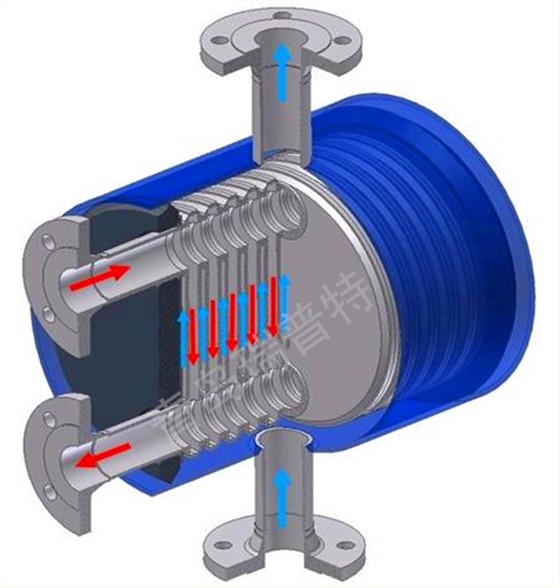
Schematic diagram of internal structure of plate and shell heat exchanger
Fig 1: Plate heat exchangers. A plate heat exchanger functions as a specialised device for transferring thermal energy between two fluid streams using a series of metal plates. One of its primary advantages over traditional heat exchangers lies in the substantial increase in surface area for heat exchange, achieved by spreading the fluids.

21 shows a simple platetype heat exchanger. The hot fluid (red) and... Download Scientific
In this video we learn how a plate heat exchanger works, covering the basics and working principles of operation. We look at 3d models, animations and real w.

Plate Heat Exchanger, How it works working principle hvac industrial engineering phx heat
API Schmidt-Bretten plate heat exchangers have been installed world wide providing a wide variety of heat transfer solutions using diverse fluids at different temperatures. The core of the plate heat exchanger is the thin metal corrugated thermal plates that both enhance and conduct heat transfer through them.

Plate and Frame Heat Exchanger Wiki Mini For Chem Heat exchanger, Refrigeration and air
A plate heat exchanger is a compact type of heat exchanger that uses a series of thin plates to transfer heat between two fluids. There are four main types of PHE: gasketed, brazed, welded, and semi-welded.
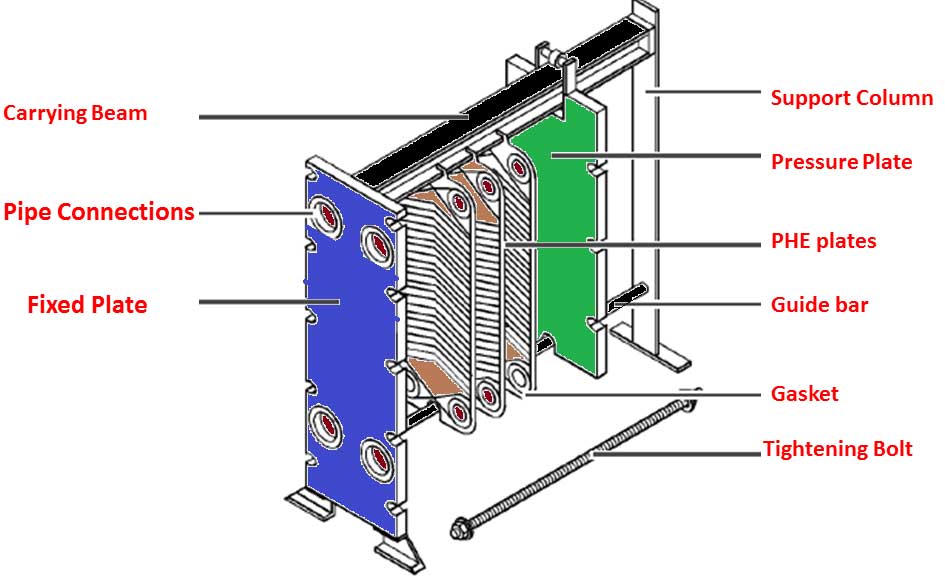
Plate Heat Exchanger Theory PHE Structure and Functional Description
Article What are plate heat exchangers? Plate heat exchangers are one of the most common types of heat exchanger employed today; the other common type of heat exchanger is the shell and tube heat exchanger. The spiral heat exchanger is also used for industrial applications, but its use is minor compared to the other two types of heat exchanger.
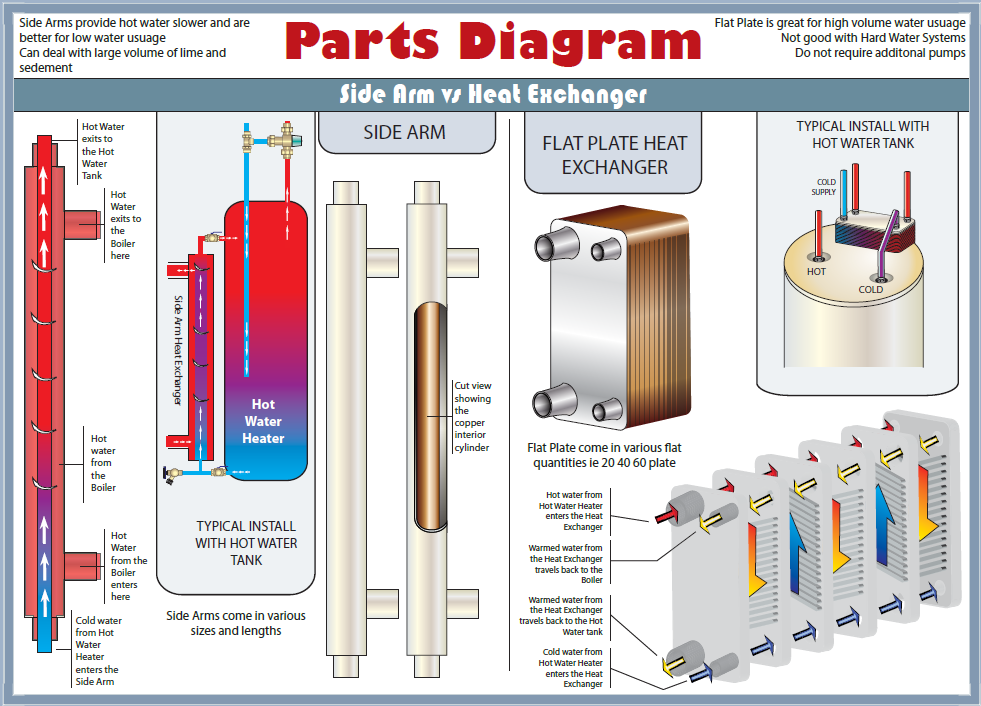
Canada Heat Exchanger Diagrams OffGrid Supply
The bolts tighten onto these bars and compress all of the plates and gaskets together forming a water tight seal. Wedged between the end plates are the gaskets and heat transfer plates. Larger heat exchangers will also have a supporting bar at the top and the bottom. This will support the weight of the heat exchanger.

Spiral plate heat exchanger. Download Scientific Diagram
A plate heat exchanger is a type of heat exchanger that uses metal plates to transfer heat between two fluids. This has a major advantage over a conventional heat exchanger in that the fluids are exposed to a much larger surface area because the fluids are spread out over the plates.

Plate Heat Exchanger Equals Higher Energy Efficiency The Washington Note
(1) Typical values of the constant and exponents are where d is the equivalent diameter defined in the case of the plate heat exchangers as approximately 2 × the mean gap. Table 1. Where α= heat transfer coefficient , λ= thermal conductivity ,
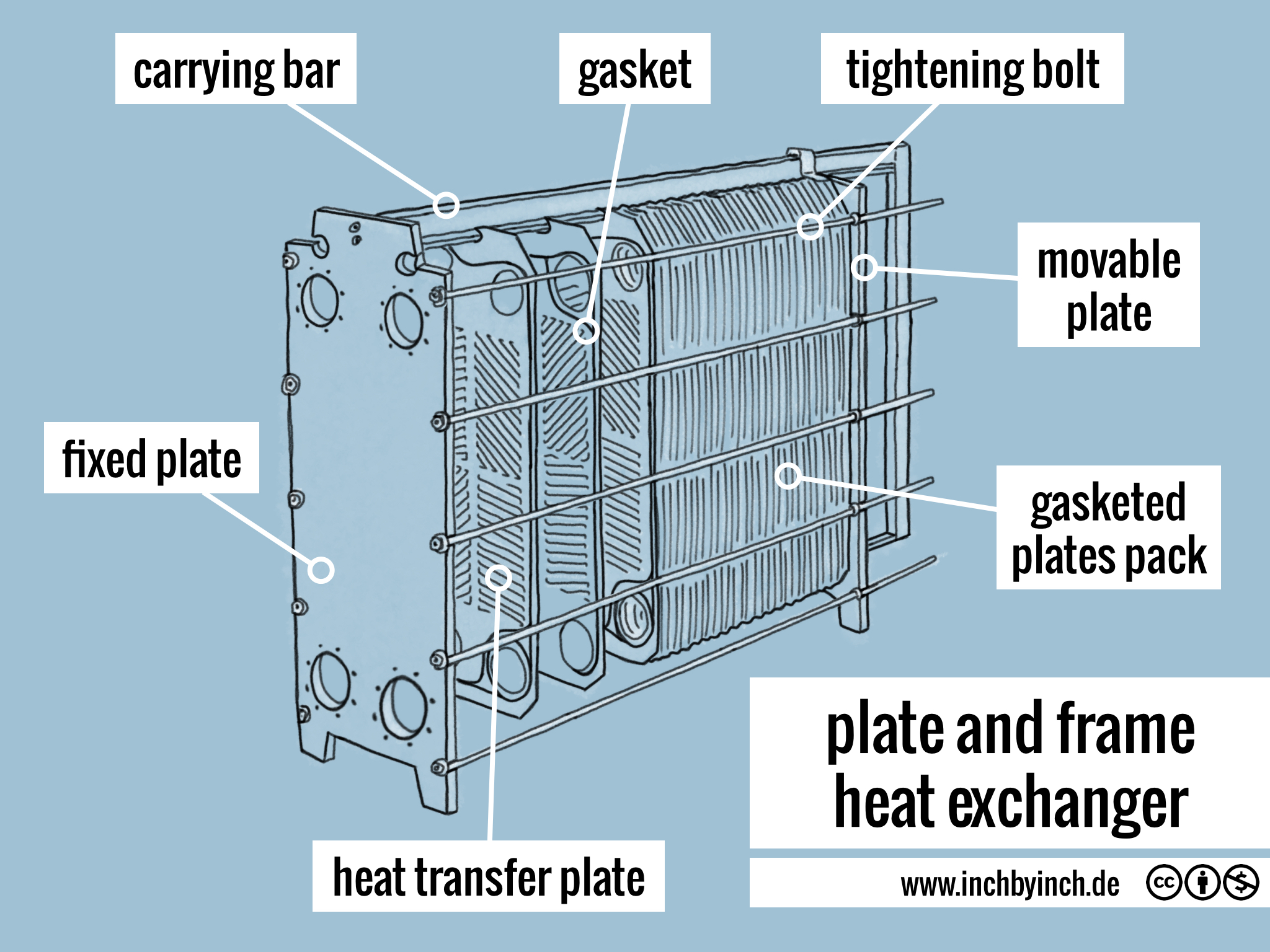
INCH Technical English plate and frame heat exchanger
The plate heat exchanger is just one method of transferring heat between two fluids, and are especially useful for heat transfer between two liquids. Examine the plate heat exchanger shown in Figure 1. The blue plates shown are the front and end covers that sandwich many corrugated metal plates together, which are sealed with rubber gaskets.
Plate Heat Exchanger Diagram General Wiring Diagram
In this new scenario, the plate heat exchanger can play an important role. A plate heat exchanger is a compact type of heat exchanger that uses a series of thin plates to transfer heat between two fluids. There are four main types of PHE: gasketed, brazed, welded, and semi-welded. The plate-and-frame or gasketed plate heat exchanger essentially.

Efficiency of Heat Exchanger Description and Formula Linquip
Sale Plate Heat Exchangers Layout Plate exchangers, shown below, are generally used in low-pressure, low temperature applications and are made up of end covers, carrying bars, inlet and outlet nozzles, plates and gaskets. Plate Heat Exchanger Construction The exchanger plates have spacing between them for liquid flow.